#Global Youth Biodiversity Network
Explore tagged Tumblr posts
Text
One World, Shared Goals: Collaborative Actions for SDG Implementation.
Bringing partners from the education sector, private industry, government, children, youth, and student organizations. Together, they will explore the best practices for building effective partnerships to speed up the SDGs implementation.
Side Event at the SDG Action Weekend organized by Permanent Mission of the Federal Republic of Germany to the United Nations in New York/Planning Institute of Jamaica/HH MSII SDG Challenge/UNESCO IESALC/UN MGCY/ Danish UN Youth Delegation / Future Perspectives/ German UN Youth Delegation/ Global Student Forum/Global Youth Biodiversity Network/One Million Teachers/UNESCO SDG4 Youth and Student Network/Save the Children/Stakeholder Group of Persons with Disabilities/The Millennials Movement/World Food Forum/.
To maximize the SDG Summit's impact, the Secretary General is convening an SDG Action Weekend, which will generate opportunities for stakeholders, UN entities, and Member States to convene inside the United Nations Headquarters and set out specific commitments and contributions to drive SDG transformation between now and 2030.
The SDG Action Weekend will consist of the SDG Mobilization Day on Saturday, 16 September, and the SDG Acceleration Day on Sunday, 17 September at UNHQ in New York.
The SDG Action Weekend includes a select number of high-level side-events identified through an open call that concluded in August. They are jointly organized by coalitions of Member States, UN agencies and other international organizations, and global stakeholder networks.
#effective partnership#sdg17#SDG Action#agenda 2030#sustainable development goals#global goals#side event#global partnerships#Permanent Mission of the Federal Republic of Germany to the UN#Planning Institute of Jamaica#UNESCO IESALC#Major Group on Children and Youth#Global Youth Biodiversity Network#UNESCO SDG4 Youth and Student Network#The Millennials Movement#One Million Teachers#stakeholders#member states#united nations entities#Side event
0 notes
Text
Am I a little bit late for some of you? I might be. But anyways. Here's what went right around the world this past week :)
Youth climate activists won a huge climate lawsuit
Sixteens youths (aged five to 22) from Montana, US, have emerged victorious after suing state officials for violating their right to a clean environment.
In their lawsuit, they argued that Montana's fossil fuel policies contributed to climate change, which harms their physical and mental health. Montana is a major coal producer, with large oil and gas reserves. The state has rebuffed these claims, saying that their emissions were insignificant on a global scale.
Judge Kathy Seely, in a 103-page ruling, set a legal precedent for young people’s rights to a safe climate by finding in their favour. “Every additional tonne of GHG [greenhouse gas] emissions exacerbates plaintiffs’ injuries and risks locking in irreversible climate injuries".
This win marks the very first time a US court has ruled against a government for a violation of constitutional rights based on climate change. It will now be up to Montana lawmakers to bring state policies in line.
“As fires rage in the west, fueled by fossil fuel pollution, today’s ruling in Montana is a gamechanger that marks a turning point in this generation’s efforts to save the planet from the devastating effects of human-caused climate chaos.” - Julia Olson, executive director of nonprofit law firm, Our Children’s Trust, which represented the youths in this case.
Number of Mexicans living in poverty fell by millions
Thanks to a new minimum wage boost and increases to pensions, the number of Mexicans living in poverty fell by 8.9 million between 2020-2022, according to new data published by the country’s social development agency, Coneval.
Coneval’s statistics suggest that the number of people living in extreme poverty also fell – from 10.8 million in 2020 to 9.1 million last year – although that figure is still up from a pre-Covid 8.7 million recorded in 2018.
There is still a long way to go, and some critics do claim that during the current president, López Obrador's presidency has been characterized by austerity.
An organised crime group trafficking endangered species has been jailed
The Wildlife Justice Commission (WJC), a small European wildlife charity, is apparently busting kingpins behind as much as half of the world's illegal trade in pangolin scales. The traffickers began six-year jail sentences a few weeks ago.
The wildlife charity went undercover to expose three Vietnamese and one Guinean national, members of an organised crime group trafficking body parts of endangered species including rhinos.
They were arrested in May 2022, following a four-year investigation by the WJC, and were accused of trafficking 7.1 tonnes of pangolin scales, as well as 850kg of ivory. Last month they pleaded guilty to smuggling and were jailed for six years.
All eight species of pangolin are listed as threatened animals, four critically endangered - they are protected by international law.
“There has not been a reported seizure of pangolin scales in Asia originating from Africa in more than 550 days,” said Steve Carmody, WJC’s director of programmes. “There is no clearer example of the importance of disrupting organised crime networks.”
AI gave conservationists a breakthrough
The use of AI-controlled microphones and cameras seems set to revolutionise
biodiversity monitoring in the UK following groundbreaking work by researchers at the Zoological Society of London (ZSL). They used the tech to record and analyse 3,000 hours of wildlife audio captured by monitors located near London railway lines.
The computers detected dozens of bird species, foxes, deer, bats and hedgehogs, and mapped their locations.
It’s hoped the innovation will help improve conservation and habitat management on Network Rail land.
This year is best ever for UK renewable energy installations
This years looks to be the best year so far for UK renewable energy installations, with record numbers of households fitting solar panels and heat pumps.
2023 marks the first time solar panel installations have topped an average of 20,000 a month, as homeowners look to harvest energy from the sun amid rising utility bills.
Read the full story here.
The UK’s Tree of the Year shortlist was revealed
The Woodland Trust has announced the shortlist for its annual celebration of some of the UK’s most treasured ancient trees, and for 2023 the spotlight is on the urban landscape.
“Ancient trees in towns and cities are vital for the health of nature, people and planet,” said the charity’s lead campaigner Naomi Tilley. “They give thousands of urban wildlife species essential life support, boost the UK’s biodiversity and bring countless health and wellbeing benefits to communities.”
Article published August 17, 2023
Thank you so much for reading! Let me know what interested you, and if there's any specific topic you'd like me to dig into, my DM's are always open :)
Much love!
#climate change#climate#hope#good news#more to come#climate emergency#news#climate justice#hopeful#positive news
115 notes
·
View notes
Text
YSEALI Seeds: Recycle Dalat
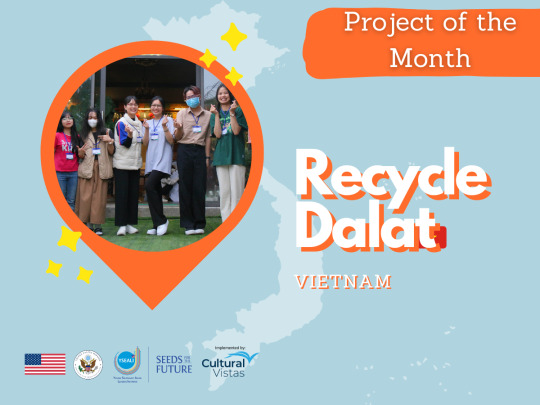
About the Project
Established in January 2022, Recycle Dalat is a non-profit project. We aim to protect the environment with a commitment to create and maintain a community with a green lifestyle, who love Da Lat centered on 3 areas: Cognition · Recycle · Afforestation.
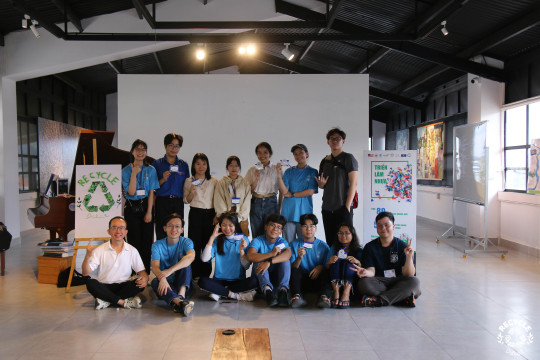
Why do you care about this specific topic/issue?
Vietnam is one of the largest plastic polluters globally, discharging ~1.8 million tons of plastic waste into the environment annually. Vietnam also loses ~2,430 hectares of forest annually. These 2 problems both contribute to all 3 of the Triple Planetary Crisis - climate change, biodiversity loss, and pollution - making them critical issues to tackle should we wish to protect the environment.
Why did you decide to start this project?
As a young person born and raised in Da Lat, I (Nghi) witnessed Da Lat's economic development and the problems that came with said development. One problem was waste, and its effect on the quality of life of my fellow Da Lat citizens.
Instead of waiting for someone to do something for Da Lat, a mountainous area, I decided take matters into my own hands. Recycle Dalat was thus born, to contribute to a cleaner, greener, and prettier Da Lat.
Lee, Hnin, Aung and I are alumni for the YSEALI Fall 2022 Academic Fellowship Program to Hawaii. Through the program, we discovered that we work well together and have similar interests in tackling environmental problems. Together with the help of my mentor, Hanh, we further developed the project. We took advantage of my existing connections and network in Da Lat, Vietnam; Yang’s critical and creative thinking skills, having designed an environmental card game in Singapore; Aung and Hnin’s passion and drive, as well as their communication skills and dedication to protect the environment. Hanh, my mentor, is a well-connected individual in Vietnam who also helped significantly with the project. He is also very experienced as he has been working on the afforestation program. Together, the team represents talented and ambitious youths from around Southeast Asia that are ready to drive impact through a project that is for Southeast Asia, by Southeast Asians.
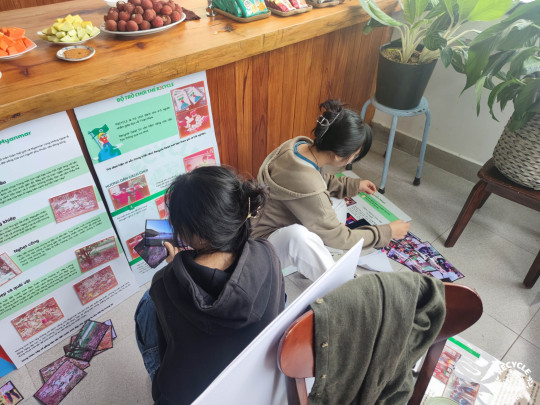
What are your goals for this project?
Recycle Dalat attempts to protect the environment and develop a community with a green lifestyle. At the end of the project, we hope to:
Increase plastics collection and recycling rates in Da Lat, Vietnam, with aims to inspire more than 100 youths to adopt the habit of recycling plastics and to treat more than 2,000 kg of plastic waste.
Plant more than 3,500 trees over 3 hectares of land in Vietnam through our partnership with the JOY Foundation, and inspire 1000 youths to participate in the tree planting.
Develop Vietnamese youths into future leaders and help them build connections with their peers from Myanmar and Singapore through our 5-week long online workshop with 100 Southeast Asian youths, 15 social media articles outreach, 1 plastic exhibition and 50 sets of prototype environmental card games. In total, we wish to reach 20,000 youths.
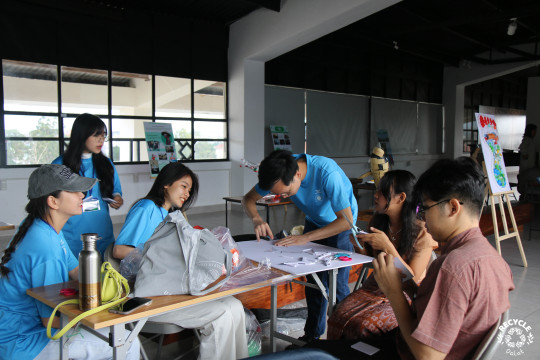
How will YSEALI Seeds help you achieve your goals?
YSEALI Seeds provided us with the financial resources required to scale the project. Most of our activities would not be able to be conducted at scale without the YSEALI Seeds grant. We also found that working at a sufficiently large scale makes it easier for us to find partners.
YSEALI Seeds also help us more easily build connections with various organizations, as Recycle Dalat can leverage the YSEALI Seeds branding to more easily convince others to partner with us.
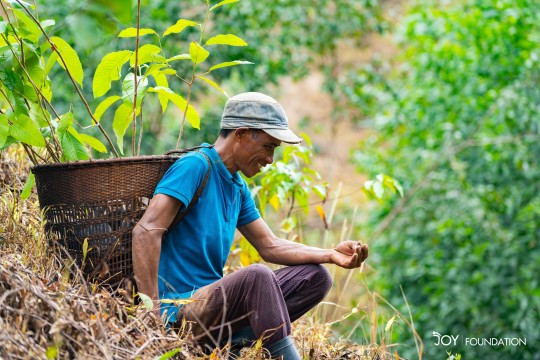
What have you accomplished and implemented so far?
The Recycle Dalat held a total of 3 exhibitions on 20, 21 May, 22 May at the SOS Village, Pedagogical College of Dalat and Yersin University respectively. In total, 660 participants joined our exhibition over the three days. We also collected a total of 738 kg of recyclable waste. 110 kg of low-valuable plastic waste were sent to Plastic People in Ho Chi Minh City, and the remaining waste that can't be recycled in Da Lat were sent to the local recycling facility. We are in the process of planning our online workshop. We have received 269 applications for it, and have confirmed 2 of the 3 guest speakers. We are planning plant 4,000 trees in June, with the saplings growing well in a nursery.
What are the most significant lessons learned you've experienced so far?
To always have back-up plans. From the start of our project, we constantly experienced partners who canceled on us last minute despite numerous confirmations on their end. This means that as much as possible, the team has learned to complete tasks in-house and organize our own events instead of relying on other organizations. Adopting a better safe-than-sorry mindset is draining on our resources, but also provides a peace of mind that the project can still run smoothly in the event of a worst case scenario.
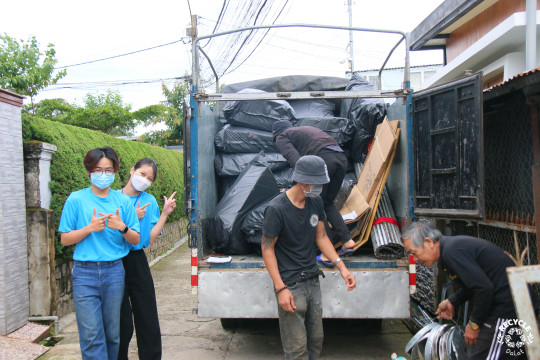
What are the success stories you can share with others who would like to do the same type of activity and/or project like yours?
Our 2 biggest success stories are our in-person plastic exhibitions and the amount of recyclable waste we have collected thus far.
Our in-person plastic event was a great success. Despite our event being held at poor time slots (such as weekends, holidays or during examination periods), many students still came to support our event. In total, we received 660 students over 3 exhibitions at 3 different schools. The students were also very enthusiastic about our workshop and brought 147 kg of recyclable waste for us. This was around two-thirds of all the recyclable waste we collected in May. We also received a lot of positive feedback from the students and were pleased that they enjoyed the event. We hope that this positive feeling towards recycling can stay with them forever and inspire them to continue doing so in their everyday lives.
We have also collected ⅓ of our goal for recyclable waste, having collected 738 of 2000 kg of recyclable waste. This was done in partnership with various schools, organizations and the members of the community. We also reached the milestone sooner than we expected, which was around July-August. When walking around Da Lat and looking at the clean streets, we feel proud knowing that our home is clean in part due to the project.
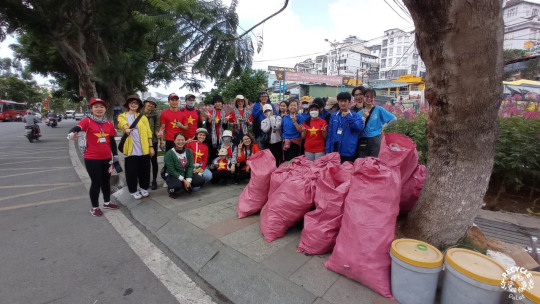
2 notes
·
View notes
Text
The Agence Francophone
The term francophone refers to the worldwide community of French-speaking people. It includes nations and communities in all continents. The organization is a multilateral intergovernmental forum that promotes cooperation in the fields of education, culture and new technologies.
The organization’s charter was adopted in 2005. Its goals include promoting the French language and cultural and linguistic diversity. It also supports economic development and democracy.
The Agence universitaire de la Francophonie (AUF)
Founded in 1961 a Montreal, the agence francophone de la Francophonie is the premier global network of universities, centers of scientific research and institutions of higher learning and the world's largest operator for university cooperation and development. It comprises more than 1 000 etablissements membres, distributed over five continents.
It is the only international organization with a mandate to implement the commitments made by the heads of state and governments at their summits. It also advises the Canadian federal government departments involved in planning and implementing projects announced at these summits, as well as those undertaken by La Francophonie institutions.
Respecting the diversity of cultures and languages, it aims for a university community engaged in the social, cultural and economic development of societies. It also advocates for a stronger role for La Francophonie in global governance, and fights against piracy, counterfeiting and terrorism. It also promotes economic development and sustainable development, food security and biodiversity and combats climate change.
The Institut de la Francophonie pour l��Informatique (IFI)
Avec ses nombreuses ressources – enseignants, experts, chercheurs et titulaires de bourses – l’IFI offre des cours à la fois d’informatique et de technologie informatique dans le domaine des sciences et technologies communautaires. Elle accueille également chaque année un grand nombre d’étudiants de différentes pays du monde entier pour des études supérieures à Hanoi.
During its three decades of development, the IFI has evolved ceaselessly. It is a highly prestigious établissement of higher learning in Asia, recognized worldwide and offering its students a high-quality academic environment. Its success relies on its guiding values, namely the promotion of the French language and of the world’s cultural and linguistic diversity, as well as internationalism, interdisciplinarity, and quality.
The Agence internationale de la Francophonie (AIF)
The Agence internationale de la Francophonie (AUF) is the main intergovernmental organization of the French-speaking countries of the world. Its mission is to support the French language worldwide and promote cultural and linguistic diversity. It also supports international cooperation projects to boost economic development. The AUF is also a key organizer of the conferences of higher education and research ministers of the French-speaking world (Conference des ministres francophones de l’enseignement supérieur et du recherche: CONFEMER).
The political decision-making body of La Francophonie is the Sommet de la
Francophonie, which gathers heads of state and government from its member states every two years. In addition, the organisation has a consultative body called the Assemblee parlementaire de la Francophonie, four operating agencies – l’Agence universitaire de la Francophonie (Association of francophone universities), the international TV channel TV5Monde, the International Association of Mayors of the French-speaking world and the Universite Senghor d’Alexandrie -, and two permanent interministerial conferences: for education ministries and those for youth and sports.
The Assemblée internationale de la Francophonie (AIF)
The Assemblée internationale de la activités nautiques malte (also referred to as the Organization of International La Francophonie, or OIF) is an international organization made up of nations that have French as their official language and that share values such as peace, democracy, solidarity, and economic development. Its institutions promote cooperation among the members and work to advance the cultural, scientific, technical and economic interests of their populations.
Founded in 1961 in Montreal, Quebec, Canada, by the Association des universités de langue française (AUPELF), its international headquarters is located at the Université de Montréal.
Its four operating agencies implement multilateral francophone cooperation projects alongside the Assemblee parlementaire de la Francophonie [Parliamentary Assembly of the Francophonie], TV5MONDE, and the Association internationale des maires et responsables des capitales et métropoles partiellement ou entièrement françaises (AIMF). The Canadian federal government manages international Francophonie matters through the Department of Foreign Affairs and International Trade’s Francophony Affairs Division. The division is responsible for the bulk of the funds that Canada devotes to OIF and oversees the implementation of projects resulting from summits and ministerial conferences.
0 notes
Text
Climate Warrior Girls
PART 1: Leah Pennima
1. What challenges did Leah Penniman overcome to become a leader?
As a Black woman in a predominantly white agricultural sector, Penniman has navigated systemic racism and discrimination. She has worked to address and dismantle these barriers within the farming community. For example, gaining access to land for farming can be particularly difficult for marginalized groups. Penniman has advocated for equitable land access and worked to create pathways for Black and brown farmers to own land.
Furthermore, securing funding and resources for initiatives aimed at supporting underrepresented farmers has been a significant challenge. Penniman has had to be resourceful in seeking grants, partnerships, and donations to sustain her work.
2. What is unique about her career path and offerings?
Leah Penniman's career path and offerings are unique due to several factors that intertwine her personal experiences with broader social and environmental goals. Penniman emphasizes a holistic approach to farming that integrates sustainable practices, ecological stewardship, and social justice. Her work at Soul Fire Farm reflects a commitment not just to growing food but also to cultivating community resilience and empowerment. Penniman offers educational programs that empower individuals and communities, particularly those from marginalized backgrounds, to reclaim their ancestral knowledge and engage in sustainable farming practices. This includes workshops, training, and resources aimed at fostering self-sufficiency.
Something I found particularly unique was her background as a writer and artist. Penniman often uses storytelling, poetry, and creative expression to communicate the importance of food justice and connect with diverse audiences. By utilizing storytelling and creative expression, Penniman raises awareness about food justice issues and the experiences of marginalized farmers. This innovative approach helps bridge gaps between diverse communities and fosters a deeper understanding of systemic inequities.
3. What solutions and innovations does she offer?
At Soul Fire Farm, Penniman implements regenerative agricultural practices that restore soil health and biodiversity. This model serves as a blueprint for sustainable farming, focusing on ecological balance and resilience.
4. Why do you think so many women are leading the charge on climate?
The growing leadership of women in the fight against climate change is driven by several interrelated factors. Women, particularly in marginalized communities, have historically faced the brunt of climate impacts, such as food insecurity and displacement, which often propels them into advocacy roles. Their strong community connections, particularly in areas like agriculture and resource management, position them as effective advocates for sustainable practices.
Women also approach climate action through an intersectional lens, recognizing the interconnectedness of social justice, economic inequality, and environmental sustainability. Increased access to education and empowerment initiatives has further elevated their roles in climate activism. The visibility of influential women leaders and the formation of global networks enhance their effectiveness and amplify their voices. Ultimately, women view climate action as a responsibility to future generations, advocating for sustainable solutions that benefit their communities and create a more equitable world. This rise in female leadership reflects a broader trend toward inclusivity in environmental movements, emphasizing that effective solutions require the participation and leadership of all sectors of society.
PART 2: Juliana vs The United States
What legal precedents have been set by this Historic Environmental Lawsuit launched by a group of teenagers, named for Kelsey Juliana, youth activist since age 10?
The Juliana v. United States lawsuit, launched by a group of teenagers including Kelsey Juliana, really marks a significant turning point in both environmental law and youth activism. One of the most impactful aspects of this case is that it establishes legal standing for young people, asserting their constitutional right to a stable climate. This is crucial because it recognizes that young people are particularly vulnerable to the long-term effects of climate change. By framing climate change not just as an environmental issue but also as a constitutional one linked to rights like life, liberty, and property, the lawsuit pushes the government to acknowledge its legal and moral responsibilities to protect the environment.
Additionally, the lawsuit introduces the idea of intergenerational equity, which holds that the government must consider the impact of its actions on future generations. This sets an important precedent for holding governments and corporations accountable for their contributions to climate change. Although the Ninth Circuit Court of Appeals ultimately dismissed the case in 2020, its influence continues to resonate, inspiring a wave of youth-led climate movements and innovative legal strategies around the world. In the end, the legacy of Juliana v. United States empowers future generations to advocate for climate justice, showing that the voices of young people are absolutely essential in shaping effective environmental policy.
How did this case set the stage for the recent win for youth climate activists in Montana?
Legal Precedent: Juliana v. United States established critical legal precedents regarding the standing of youth in climate lawsuits. By asserting that young people have a constitutional right to a stable climate, it laid the groundwork for future cases, including Held v. Montana, where youth plaintiffs could similarly claim their rights were being violated by government inaction on climate change.
PART 3: Held v Montana
Pull a key quote from the piece and discuss the groundbreaking implications of the Montana legal case
“As fires rage in the west, fueled by fossil fuel pollution, today’s ruling in Montana is a gamechanger that marks a turning point in this generation’s efforts to save the planet from the devastating effects of human-caused climate chaos.”
The implications of this ruling are indeed groundbreaking, as it marks the first time a court has recognized that government policies promoting fossil fuels violate young people's constitutional rights to a clean and healthful environment. This decision sets a powerful precedent for future climate litigation, particularly for youth-led initiatives. It emphasizes that state governments must account for their contributions to climate change and the resulting harm to citizens. The ruling not only empowers young activists in Montana but also serves as a model for similar legal actions across the United States and around the world. By affirming the importance of constitutional protections in environmental law, the Montana case could inspire a wave of litigation that challenges fossil fuel policies, ultimately leading to more robust climate action and accountability from governments.
What aspect of the state constitution sealed their argument?
In the landmark case Held v. Montana, the plaintiffs effectively leveraged a specific aspect of the Montana Constitution that guarantees citizens a “clean and healthful environment.” This provision became a cornerstone of their argument against state policies that promoted fossil fuel development while actively prohibiting the consideration of climate impacts in environmental reviews. Judge Kathy Seeley ruled that these policies were unconstitutional because they violated the plaintiffs’ rights by ignoring how greenhouse gas emissions and climate change would affect the environment.
Why do you think so many young women are taking the lead on climate?
I believe that social media is encouraging not just a lot of young women, but young people at large to take the lead on climate issues. The rise of social media has provided young people with platforms to share their stories, connect with like-minded individuals, and organize campaigns more effectively. This connectivity amplifies their voices and helps them mobilize support for their initiatives.
How does this case impact the global youth climate movement?
The case has garnered widespread media attention, shining a spotlight on the urgent need for climate action and the voices of young activists. This visibility helps mobilize support for youth-led initiatives, encouraging more young people to engage in climate activism.
0 notes
Text
Malaysia's Latest Headlines: Stay Updated with Real-Time News Coverage
Malaysia remains a vibrant country with a dynamic news landscape, where every day brings new stories that capture the public's interest. Keeping track of these updates is essential, whether you're a local resident, a business professional, or an international observer. Here’s a comprehensive guide to understanding the Latest Breaking News in Malaysia happenings in Malaysia, brought to you by some of the top news sources in the country.
Breaking News from Malaysia Today
The political landscape in Malaysia has been particularly eventful recently, with numerous developments occurring across different regions. "Malaysia Today News" has been abuzz with discussions on government policies, elections, and public opinions. Key political figures have been active in reshaping strategies and forming coalitions, reflecting the dynamic nature of Malaysian politics.
For instance, recent discussions surrounding economic policies have sparked debates on social media, highlighting concerns over inflation, cost of living, and the overall direction of the country’s fiscal management. Additionally, efforts to tackle corruption and promote transparency remain a major focus in the current news cycle. Readers are particularly keen on knowing how these efforts will shape Malaysia's future.
Malaysia News Live Today: Real-Time Updates
If you are looking to stay updated in real-time, "Malaysia News Live Today" is your go-to source for continuous updates on what’s happening across the nation. Live news coverage is particularly useful during critical moments, such as parliamentary sessions, national emergencies, or major events like festivals and sports matches.
Lately, the live news segment has covered pressing topics such as the nation’s post-pandemic recovery, with a special focus on the healthcare system, economic resurgence, and the rollout of new social welfare schemes. Live reporting has also delved into environmental concerns, like the impacts of climate change and deforestation on Malaysia's unique biodiversity.
Key Issues Shaping Malaysia’s News Landscape
Economic Developments
Malaysia’s economy is at a critical juncture, recovering from the effects of the global pandemic while facing new challenges. Reports from "Malaysia Today News" reveal a mixed bag of growth indicators. While there are positive signs in manufacturing and digital industries, sectors like tourism and small businesses still face hurdles. The government’s approach to managing inflation and attracting foreign investments is under close scrutiny.
Social and Cultural Highlights
The country’s rich cultural fabric continues to be a major topic in "Malaysia News Live Today." Recent news has highlighted the celebration of local festivals, cultural preservation efforts, and the promotion of Malaysia’s diverse heritage on the global stage. Simultaneously, social issues, such as rising youth unemployment and access to education, have become focal points of public discourse.
Technological Advancements
Malaysia is swiftly embracing technological innovation, aiming to become a regional leader in digital transformation. Recent updates on "Malaysia Today News" have covered developments in the country’s digital economy, including advancements in 5G networks, smart cities initiatives, and the growth of e-commerce. Current News in Malaysia is positioning itself as a hub for tech startups and innovation, which will be pivotal for its economic future.
Why Stay Updated?
With the fast pace of developments across various sectors, keeping yourself informed with reliable news sources is essential. "Malaysia News Live Today" offers a real-time window into the nation's happenings, from political moves to social changes and economic forecasts. Staying updated helps in understanding the evolving narrative of Malaysia and its place on the global stage.
0 notes
Text
The Role of Youth in Driving Social Change
The Role of Youth in Driving Social Change https://mattdixongreenvillesc.net/the-role-of-youth-in-driving-social-change/ In today’s rapidly changing world, the involvement of youth in driving social change has become increasingly significant. Young people possess unique perspectives, energy, and passion that can catalyze positive transformations in their communities and beyond. Here, we explore the essential role of youth in driving social change and the strategies they employ to make a meaningful impact. 1. Catalysts for Innovation and Creativity Youth are natural innovators and creative thinkers, often unbounded by conventional norms and constraints. Their willingness to question the status quo and their newfound perspectives make them important social innovation catalysts. Whether through technology, art, activism, or entrepreneurship, young people bring novel ideas and solutions to address pressing social issues, driving change in diverse sectors such as education, environment, and healthcare. 2. Agents of Advocacy and Activism Empowered by social media and digital connectivity, youth are increasingly vocal and active in advocating for causes they believe in. From climate action to human rights, young activists worldwide are leading grassroots movements and campaigns to raise awareness, mobilize communities, and hold decision-makers accountable. Through protests, petitions, and online activism, youth amplify marginalized voices, challenge injustices, and push for systemic change on local, national, and global scales. 3. Builders of Empowerment and Resilience Youth engagement in community development initiatives fosters empowerment and resilience among individuals and groups. By involving young people in decision-making processes, skill-building activities, and leadership roles, communities harness their potential as change agents and future leaders. Youth-led initiatives promote inclusivity, diversity, and social cohesion, creating spaces for dialogue, collaboration, and collective action to address shared challenges effectively. 4. Drivers of Sustainable Development Youth have a stake in advancing sustainable development strategies that protect the environment and raise living standards for both current and future generations because they are the planet’s heirs. Through education, advocacy, and grassroots projects, young environmentalists advocate for climate action, biodiversity conservation, and sustainable resource management. By promoting sustainable lifestyles and advocating for policy changes, youth contribute to building resilient and environmentally sustainable societies. 5. Partnerships and Collaboration Recognizing the importance of intergenerational collaboration, youth actively seek partnerships with diverse stakeholders, including governments, civil society organizations, businesses, and academia. By leveraging their networks and expertise, young people amplify their impact, access resources, and influence decision-making processes. Collaborative initiatives such as youth councils, mentorship programs, and cross-sectoral partnerships facilitate knowledge exchange, capacity building, and collective action for social change. The role of youth in driving social change is indispensable for building inclusive, equitable, and sustainable societies. By harnessing their creativity, advocacy, empowerment, and collaboration, young people contribute to addressing complex challenges and shaping a better future for all. In addition to being morally required, investing in youth empowerment and participation is a calculated risk that will pay off in the long run by strengthening global societies and producing future leaders. The post The Role of Youth in Driving Social Change first appeared on Matt Dixon Greenville SC | Philanthropy & Community Involvement. via Matt Dixon Greenville SC | Philanthropy & Community Involvement https://mattdixongreenvillesc.net
0 notes
Link
0 notes
Text
Wildlife Warriors: Youth Leading the Charge in Animal Advocacy | UNESCO Body and Mind Wellness

In an era marked by environmental challenges and the urgent need for conservation, youth around the world are emerging as formidable wildlife warriors, passionately advocating for the protection and well-being of Earth's diverse species. Armed with empathy, knowledge, and a fervent desire for positive change, these young individuals are leading the charge in animal advocacy, embodying a spirit of activism that is reshaping the future of wildlife conservation.
Education forms the bedrock of youth-led animal advocacy. With unprecedented access to information, today's young individuals are arming themselves with knowledge about endangered species, habitat loss, and the impact of human activities on wildlife. They are not merely spectators; they are informed advocates who understand the intricate connections between ecosystems and the delicate balance that sustains life on our planet.
The power of social media becomes a potent tool in the hands of wildlife warriors. Platforms like Instagram, Twitter, and TikTok allow youth to amplify their voices, share compelling stories, and raise awareness about the plight of animals. From viral campaigns to captivating visuals, these digital natives leverage the reach of social media to galvanize support, inspire action, and spark conversations that transcend geographic boundaries.
Youth-led conservation projects are making a tangible impact on the ground. From organizing tree planting initiatives to participating in beach clean-ups, young animal advocates are actively engaged in hands-on projects that contribute to the preservation of natural habitats. Through these initiatives, they not only address immediate environmental concerns but also foster a sense of responsibility and stewardship for the planet.
Advocacy extends beyond screens and projects, as youth actively lobby for policy changes and participate in conservation efforts at local, national, and international levels. Whether it's attending conferences, collaborating with environmental organizations, or petitioning governments, these wildlife warriors are determined to see tangible changes in legislation and enforcement that safeguard the welfare of animals and their habitats.
The commitment to ethical and sustainable practices is a hallmark of youth-led animal advocacy. From promoting responsible tourism to advocating for cruelty-free products, young individuals are reshaping consumer behaviors and encouraging eco-friendly choices. Through their influence as consumers, they are driving industries towards practices that prioritize the well-being of animals and the planet.
Collaboration and networking among youth advocates amplify their impact. By forming alliances, sharing resources, and collaborating on initiatives, these wildlife warriors create a united front against the threats faced by animals. The sense of community and shared purpose among youth advocates enhances their effectiveness and ensures that their collective voice is heard on a global scale.
In conclusion, wildlife warriors represent a generation of empowered and compassionate youth who are not bystanders but active participants in the fight for animal advocacy. Through education, social media, hands-on projects, policy advocacy, ethical choices, and collaboration, these young individuals are leading the charge to protect the rich biodiversity of our planet. As they continue to shape the narrative of wildlife conservation, their passion and determination inspire hope for a future where humans and animals coexist harmoniously on a thriving and sustainable planet.
#better health#unesco#sustainability#lifestyle#unesco body mind wellness club#unesco bmw#education#mental health#non profit#animals#youth
0 notes
Text
Teaching children the value of biodiversity to re-training adults in sustainable professions.
A growing number of young people agree that transforming our education systems holds the key to transforming our future, from teaching children the value of biodiversity to re-training adults in sustainable professions. But despite support from the youth community, the potential of transformative education remains largely unrecognised, writes Swetha Stotra Bhashyam of the Global Youth Biodiversity Network (GYBN), an IUCN Global Youth Summit partner.
#Global Youth Biodiversity Network (GYBN)#Biologically diverse#Biodiversity#Courses#Biological Diversity#Transforming Our Education System
0 notes
Text
Radical Rituals
forty-five degrees is an open collective of architects and designers dedicated to the research and critical making of collective space. They take different forms when engaging in collaborations with other experts, adapting to the project’s scope. In their practice, space-making is about resources, not only material or financial but the intangible resources of human and non-human knowledge.
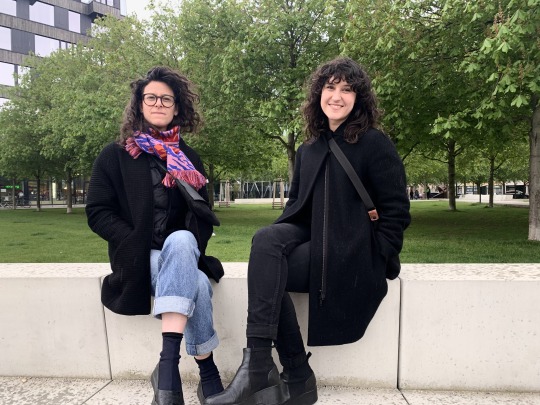
Talking in the park in front of Tageszeitung in Berlin-Mitte with Alkistis Thomidou and Berta Gutierrez. | Photo © Boštjan Bugarič
Their work aims at investigating the built environment through research, design and artistic experimentation, across multiple scales and in its social, economical and structural entanglements.They are collecting protocols and collective approaches, exploring alternative living and city making models and new paradigms of urban development to engage with communities and local agents. They strive to create inclusive and accessible spaces through careful use of scale, material and design language with a commitment to rethinking education through academia and practice placing design at the intersection of arts and sciences. Berta Gutierrez and Alkistis Thomidou were talking to Boštjan Bugarič.
***
For this interview we meet in a new park next to Hejduk’s Tower; why did we meet here? BG: I really appreciate Hejduk's theoretical work and I find it very relevant nowadays since I believe it can give us many leads on how architecture should be taught during the contemporary crisis.

In 2010 the architecture community gathered to protect the Kreuzberg Tower as new owners began altering the facade. | Photo © Boštjan Bugarič
Around this park are also other important buildings? AT: On the other side we find a first cooperatively built project for offices, FRIZZ, and on the other there is also the new TAZ building.
This park is divided with paths (lines), how can we create these lines? AT: This area had a very strange atmosphere although it is quite central. I am actually the first time in the park after its renovation. These lines cutting through the space shall be a result of shortcuts where people cross the former park, literally, the footprint.

“Radical Rituals” is an itinerary survey along the 45ºN parallel, on the inventiveness of everyday life, new hybrid vernacular practices and rituals that stimulate and nurture the commons across Europe. | Photo © forty-five degrees
What about your line, the forty-five degree? What is a project about? AT: The name came along with the idea of a research of the 45ºN parallel as many people in our team come from the south of Europe but studied or work and live in the north part of Europe. This line has influenced our way of thinking and although it is a fictional line it burdens Europe and represents a border that people try to cross every day from South to North. We wanted to investigate what is happening along this line that crosses France, Italy, Croatia, Serbia, Romania all the way to the Black Sea. Although it cuts the middle of Europe, cities around it are considered ‘peripheral’. We are researching how the European identity is reflected along this line.

Polarisation between north and south, heterogeneous economic models, diversity of cultural and historic backgrounds. | Photo EW Elsevier Weekblad, Issue 22, 2020
What have you discovered so far? BG: We are currently preparing our first field trip, and we will be in Romania and Serbia by September. Right now this is a very fascinating part of the project as it is like a zoom into the ground. If you go very far away, you see the meridians and parallels as the way of shaping the world, but when you start to get closer, you see countries, borders, cities, landscapes and people. We would like to zoom in as much as possible, so we can really understand local situated practices that are happening in very specific physical environments.
AT: The project “Radical Rituals” is a survey on very local spatial practices or initiatives that addresses climate challenges, space justice and biodiversity. We want to be surprised by what we learn along the way, what kind of collectivity is created and how local identities can influence space production.

A British writer Shumon Basar references the metallic flowers of Hejduk on the facade as,"grips for angels to hold onto when they climb the sides of the tower” inspired by “Wings of Desire"by Wim Wenders. | Photo © Boštjan Bugarič
BG: In this sense it is great that we are in front of Hejduk’s building because he proposes the way in which design comes as a result of small narratives or characters entangled with each other, working with crafts or local materials and contexts. For us the exercise is similar, but instead of working with fiction we work with reality as nowadays reality is complex enough. We don’t have all the answers to these challenging topics, but we believe that this exercise will give us a sort of light.
AT: Through this research we want to see what stories point to possible futures and possible present-s as people develop tools and knowledge that is embedded in the context of the local space. We worked on this concept at the Architecture Triennial in Oslo, where we created a digital Atlas that connects OAT’s archive and discourse with the transformations that take place on the city’s ground through local initiatives. We encountered initiatives that manage to achieve systemic changes and give multiple answers to the big challenges we are facing. In a way, proving that the environment is a primal source of our knowledge.

Oslo In Action(s) is a research project uncovering city-makers who stimulate and nurture the commons beyond the boundaries of professional practice.
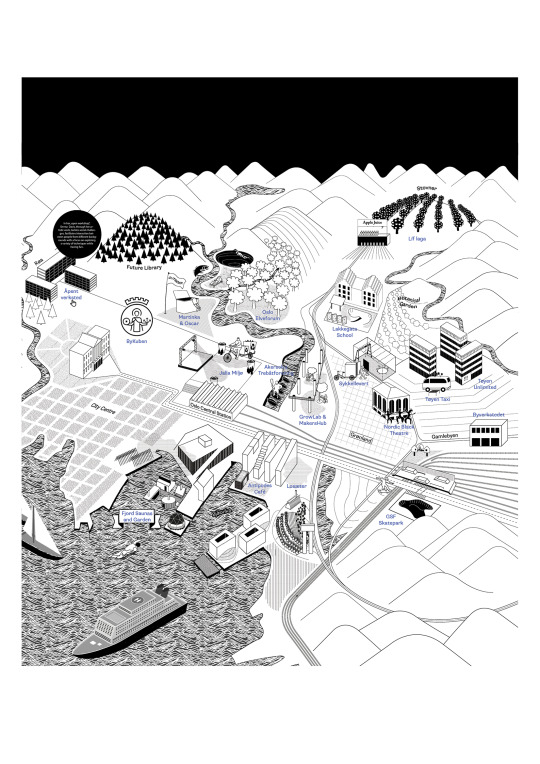
The Digital Atlas was commissioned by the Oslo Architecture Triennial for their 20th jubilee “Conversations about the city". | Photo © forty-five degrees
Your practice was as well put on the list of the Future Architecture Platform? How do you see yourself in the FAP? AT: It was an important experience to have this opportunity of working with people and institutions. We met extremely generous and inspiring people in Ljubljana and then in Oslo. Then, we got the digital research fellowship at Architectuul which enables us to meet and connect with other projects and not just sit in our office and work on the research but expand our network and bring different perspectives together. We are very grateful that the Future Architecture Platform gave space for this project.
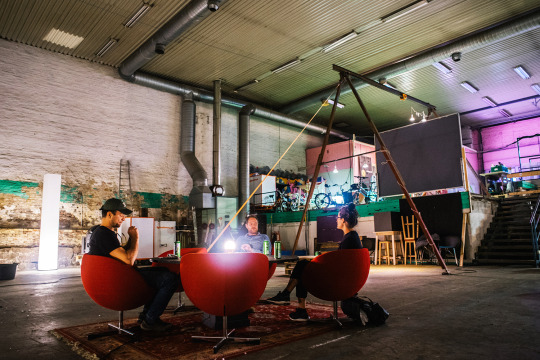

Initiatives in Oslo (up) and Urtegata Sykkellevert space for multimedia production and Tøyen Taxi. | Photo © forty-five degrees
Just finished curating a panel on Kvadrato, how did you choose panels and why you wanted to present them? AT: The panel was called ‘Communication for Commonalities’, where we invited diverse initiatives that work collectively and with several communities. Their work spans from creating digital platforms that communicate collective intelligence on a global scale, to very local projects that engage directly with a variety of actors on the ground.


With Akerselva Trebåtforening, we paddled on a 100-year-old wooden boat on an underground river running into the fjord (up); Losæter is the city farm of Oslo. | Photo © forty-five degrees
BG: It was a great example for us to address our questions and concerns and discuss them in the context of communication of architecture. As we know, communication in architecture is about media and its symbolic representation. Nevertheless, for us communication is related with the ground, physical context, methodologies and the communication channels that people use to promulgate the project with peers or bigger networks.

The Fjord floating saunas - Oslo Badstuforening. | Photo © forty-five degrees

The legendary GSF Skatepark. | Photo © forty-five degrees

The Oslo fjordhage, a floating classroom dome. | Photo © forty-five degrees
How you integrate the theoretical methods in the learning process? BG: In my personal research I try to answer the question of how do we promote other ways of learning coming from non-disciplinary practices since academia became such a rigid space with a very outdated curriculum. With non-disciplinary practices beyond academia we can really find many inputs on this crossing.

Berta Gutierrez and Alkistis Thomidou | Photo © Boštjan Bugarič
AT: We are currently collaborating with two other international practices on an Erasmus+ Youth in Action project on how to learn together. During the next two years we will develop formats of different ways of learning and engaging youth to physical interaction with various spaces in the city, public, private or common areas. We see the engagement of young adults in space-making processes as a project of emancipation and investment in the future.
2 notes
·
View notes
Text
Սիրելի հետևորդներ, տարածեք ինչքան կարող եք, խիստ կարևոր։
Հայերենը ներքևում
🔴 Ecocide Alert in Nagorno–Kharabakh region amidst war between Armenia & Azerbaijan
Dear Partner,
As you may be aware, on September 27th, 2020, full–blown war exploded between Armenia & Azerbaijan over Naghorno-Karabakh (Artsakh) with four ceasefire regimes negotiated under the umbrella of Minsk OSCE Group, violated during October, 2020.
During this large-scale war, the most intensive since the 1994 ceasefire agreement in the Southern Caucasus region, a number of war crimes were mounted & documented, among them beheadings of Armenian soldiers, killing of civilians in a city square wrapped in Armenian flags, deliberate attacks on
civilian infrastructures - residential buildings, churches, food markets, schools and maternity hospitals.
On October 30, 2020, the environmental community of Armenia, including local, regional & international environmental organizations, conservation pioneers, scientists and non-governmental organizations, was shocked to witness another disastrous war crime against natural ecosystems & crucial livelihoods of Artsakh.
As per credible reports & collected data, comprised by Human’s Right Defender of Armenia, Azerbaijani military forces have used white phosphorus munitions containing elements of chemical weapons in the primary forests of Artsakh, which is a gross violation of International Humanitarian Law, principles of Customary Law, Geneva Convention, Chemical Weapons Convention, Convention on the Prohibition of Military or Any Other Hostile Use of Environmental Modification Technique, as well as the provisions of the relevant UN conventions and documents. As video evidence shows, these weapons are being used in an
attempt to burn down forests where-civilians are taking shelter from Azerbaijan’s attacks.
The ongoing large-scale war seriously threatens the biodiversity of the region, which has been recognized
as one of the world's biodiversity hotspots. This region is well-known for its high rate of endemism and for being home to more than 6000 plant species, 153 species of mammals, 400 species of birds and other living organisms. Hundreds of plant and animal species found in Artsakh are listed both in the local Red Book and the IUCN Red List of Threatened Species having a protection status at a global level.
Among them are the critically endangered Persian (Caucasian) Leopard, known to migrate through Mrav ridge of Armenia & Artsakh towards the Iranian border, as well as to Azerbaijan and vice versa, which is a rare species with declining numbers protected at a regional & global level.
Furthermore, Armenia & Artsakh are known for their primary forests, which are amongst the most biodiverse forests in the region. Not only do these forests play a major role in preserving favorable environmental conditions for sustainable development, but local people are heavily dependent on these forests for their livelihoods. Traditional forest-related knowledge accumulated over thousands of years is deeply linked with the cultures of indigenous people living in Artsakh.
The usage of white phosphorus munitions by Azerbaijani forces in those forests will not only destroy valuable ecosystems & habitats and put threatened species at the risk of extinction, but will contaminate rivers & underground waters for years, thus turning into a major threat of regional scale for all the people and wildlife living in the region.
We are therefore calling out to the global conservation community for support to help stop the usage of white phosphorus munitions before they cause an environmental disaster and regional ecocide.
The usage of white phosphorus munitions contradicts to all the provisions of all environmental conventions including the Bern Convention, Nagoya protocol to Helsinki & Rotterdam conventions, verified by the Governments of both Armenia & Azerbaijan.
Although 98% of the global population live under the protection of the Chemical Weapons Convention, this
is, as we understand, unfortunately not applicable towards Armenia & ethnic Armenians living in Artsakh.
Ongoing developments continue to threaten any form of life in the region and thus we’re addressing you, as a leading environmental organization in the field, to:
● Write to appropriate contacts & conservation partners in your network to express your concern of the possible environmental destruction in Artsakh and the region
● Raise awareness within your networks/social channels and:
● Condemn the actions of any military force that uses white phosphorus munitions in forests & habitats destroying crucial ecosystems and therefore forbidden under international law.
● Call for responsibility to protect valuable ecosystems, species populations & genetic resources from ecocide in Artsakh.
● Call for moral responsibility in a time of war and exclude war crimes both against humans and nature.
Please kindly inform us, the undersigned, about actions undertaken by your organization advocating for sustainable development & environmental resilience, and further steps aimed at eliminating the risk of the ecocide in Artsakh region, which is a crucial habitat to threatened species & populations not recognizing political borders and/or regional disputes.
Link to video։ https://www.youtube.com/watch?v=qk4WBNmiygo
Yours sincerely,
1. Foundation for the Preservation of Wildlife & Cultural Assets (FPWC),
2. Armenian Society of Biologists NGO,
3. Eco Waste Environmental NGO,
4. Yerevan Aarhus Center,
5. Armenia Tree Project,
6. Sunchild NGO, [email protected]
7. Strategic Development Agency,
8. Solution Hub NGO,
9. Green Age NGO, [email protected]
10. American University of Armenia/Harutyun Alpetyan, Waste Governance Expert,
11. Environmental Public Society,
12. BlEJAN, environmental, social, business support NGO,
13. Araves Bird conservation NGO,
14. Armenian Environmental Front,
15. BEM Youth progressive Action Center
16. Freedom of Information Center of Armenia,
17. Institute of Botany after A.Takhtajyan NAS RA,
18. World Independent Youth Union,
19. Doctor Cinema Youth NGO,
20. Amities Luxembourg - Armenie a.s.b.l,
21. Formation et Sensibilisation de Luxembourg,
22. Regional Development and Research Center NGO,
23. "Econews.am" environmental informative website,
24. Public Awareness and Monitoring Centre' NGO,
25. Dingo Team NGO,
26. SALU (Sensibilité et Attention Luxembourg),
27. Caucasus Wildlife Tours,
28. Armenian Environmental Network,
29. Lab Inclusion (France)
30. Green Armenia Environmental Education NGO,
31. White Squad Environmental NGO,
32. "Armenian Botanical Society" NGO,
33. SwIdeas AB (Sweden),
34. 500 km in Armenia
35. Sunchild Eco - tours, [email protected]
36. BLESK LLC env. assessment org./Armenian Branch,
37. "Dalma-Sona" Foundation,
38. University of Traditional Medicine, Armenia,
39. Armenian Women for Health & Healthy Environment NGO,
40. One Health Coalition,
41. "EcoLur" informational NGO,
42. Clean Goris NGO,
43. Country Water Partnership NGO,
44. Sustainable Water Environment NGO,
45. "Centre for Community Mobilization and Support" NGO,
46. Green Lane NGO,
47. "Consumers' Consulting Center" NGO,
48. My Forest Armenia NGO,
49. "Support of Botanical Garden" Charity Foundation,
50. Armenian Forests Environmental NGO,
ԷԿՈՑԻԴԻ ՎՏԱՆԳ ԱՐՑԱԽՈՒՄ
Հարգելի՛ գործընկեր,
Համոզված ենք, որ տեղյակ եք սեպտեմբերի 27-ից ցայսօր շարունակվող ՝ Լեռնային Ղարաբաղի՝ Արցախի տարածաշրջանում, Հայաստանի և Ադրբեջանի միջև սանձազերծված պատերազմի մասին, որի, նույնիս�� հումանիտար հրադադարի կնքման մասով, միջազգային հանրության կողմից նախաձեռնած բազմաթիվ ջանքերն ապարդյուն էին:
Հարավային Կովկասում սանձազերծված այս լայնամասշտաբ պատերազմի ընթացքում փաստագրվել են մի շարք պատերազմական հանցագործություններ, որոնց թվում՝ հայ զինվորների գլխատումներ, հայկական դրոշներով փաթաթված քաղ. բնակչության սպանդ, մշակութային – հոգևոր արժեք հանդիսացող եկեղեցու հրթիռակոծում, քաղաքացիական ենթակառուցվածքների միտումնավոր հրետանակոծում, որոնց թվում՝ դպրոցներ, բնակելի շենքեր, քաղաքային շուկա և նույնիսկ ծննդատուն:
Հայաստանի և Արցախի ողջ բնապահպանական հանրույթն ու քաղ.հասարակությունը, որոնց թվում՝ տեղական, տարածաշրջանային կառույցներ և միջազգային բնապահպանական կազմակերպություններ, գիտնականներ և գիտական ինստիտուտներ հերթական անգամ ցնցվեցին հոկտեմբերի 30-ին՝ ականատեսը լինելով Արցախի տարածաշրջանի բնական էկոհամակարգերի և կենսապահպան անտառների նկատմամբ գործած ռազմական հանցագործությունից:
ՀՀ Մարդու Իրավունքների Պաշտպանի կողմից փաստագրված տվյալների համաձայն ադրբեջանական ռազմական ուժերը Արցախի կուսական անտառային էկոհամակարգը թիրախավորել են կիրառելով սպիտակ ֆոսֆորային քիմիական զինամթերք, ինչը միջազգային մարդասիրական իրավունքի, սովորութային իրավունքի նորմերի ու սկզբունքների, Ժնևյան կոնվենցիաների, ինչպես նաև ՄԱԿ-ի համապատասխան կոնվենցիաներով ու փաստաթղթերով նախատեսված դրույթների կոպտագույն խախտում է:
Ցայսօր շարունակվող լայնամասշտաբ պատերազմը տարածաշրջանի բնական էկոհամակարգերի ու կենսաբազմազանության լուրջ սպառնալիքներից է: Հիշեցնենք, որ մեր տարածաշրջանը միջազգային առաջատար բնապահպանական կառույցների կողմից ճանաչվել է որպես աշխարհի կենսաբազմազանության թեժակետերից մեկը, ասել է թե՝ պիտի պահպանվի համաշխարհային մակարդակով:
Մեր տարածքը հայտնի է էնդեմիզմի բարձր մակարդակով՝ բնական կենսամիջավայր ապահովելով ավելի քան 6000 բուսատեսակների, 153 տեսակի կաթնասունների և 400 տեսակի թռչունների համար, ինչը համաշխարհային բնական ժառանգություն է: Արցախում հայտնաբերված բույսերի և կենդանիների հարյուրավոր տեսակներ ներառված են ինչպես տեղական Կարմիր գրքում, այնպես էլ համաշխարհային՝ IUCN/ԲՊՄՄ կարմիր ցուցակում՝ որպես անհետացման եզրին գտնվող, համաշխարհային պաշտպանության տակ գտնվող տեսակներ:
Հայաստանն ու Արցախը հայտնի են իրենց կուսական անտառներով, որոնք տարածաշրջանի ամենաբազմազան անտառային էկոհամակարգերից են և կարևոր դեր են խաղում ամբողջ տարածաշրջանի կայուն զարգացման և էկոլոգիական հավասա��ակշռություն պահպանելու համար, իսկ տեղաբնիկները մեծապես կախված են անտառների բարիքներից: Հազարամյակների ընթացքում ձևավորված ավանդական գիտելիքները նույնպես խորապես կապված են անտառների հետ և ձևավորել են տեղաբնիկների հարուստ մշակույթն ու կենցաղը:
Արգելված զինամթերքի կիրառումը փաստացի վտանգում է մասնավորապես անհետացման եզրին գտնվող գորշ արջի, բեզոարյան այծի, հայկական մուֆլոնի, լուսանի, անգղերի և վերջապես՝ տարածաշրջանի հազվագյուտ, անհետացման եզրին գտնվող Պարսկական (Կովկասյան) ընձառյուծի գոյությունն, որ իր միգրացիան է կատարում նաև Մռավի լեռնաշղթայով՝ անցնելով ՀՀ-ի, Արցախի, Իրանի ու Ադրբեջանի տարածքներով:
Վերացնելով կարևոր ապրելավայրեր ու ոչնչացնելով մի ամբողջ էկոհամակարգ՝ սպիտակ ֆոսֆորական զինամթերքը կուտակվում է հողի և գետերի մեջ, տարիներով աղտոտելով ստորգետնյա ջրերը՝ այդպիսով վերածվելով տարածաշրջանային մասշտաբի սպառնալիքի Հարավային Կովկասում ապրող բոլոր ազգերի համար՝ այդ թվում ադրբեջանցիների:
Սպիտակ ֆոսֆորային զինամթերքի օգտագործումն հակասում է բոլոր բնապահպանական միջազգային կոնվենցիաների դրույթներին՝ Բեռնի կոնվենցիայից, Նագոյայի արձանագրությունից մինչև Հելսինկիի և Ռոտերդամի կոնվենցիաներ, որոնք վավերացված են ինչպես Հայաստանի, այնպես էլ Ադրբեջանի կառավարությունների կողմից: Թեպետ քիմիական զենքի մասին միջազգային կոնվենցիան միտված է պաշտպանելու համաշխարհային բնակչության 98%-ին, այն ակնհայտորեն շրջանցում է Հայաստանում և Արցախում բնակվող էթնիկ հայերին, ինչը մենք անընդունելի ենք համարում:
Քիմիական զենքի այս տեսակը միջազգային հանրույթն օբյեկտիվորեն ճանաչում է որպես ռազմական հանցագործություն:
Բնության պահպանությունը քաղաքական և ռազմական սահմաններ չի՛ ճանաչում, քանի որ բոլորս ապրում ենք միևնույն տարածաշրջանում և օգտվում միևնույն կենսական ռեսուրսներից:
Սպիտակ ֆոսֆորային զինատեսակի կիրառումը կենսաբազմազանությամբ հարուստ այսպիսի տարածաշրջանում անխոս կհանգեցնի բնապահպանական աղետի ու աներկբայորեն կվերածվի տարածաշրջանային էկոցիդի:
Ներկա զարգացումները շարունակում են սպառնալ հարավկովկասյան տարածաշրջանին, և այս աղետը կանխարգելելու նպատակով կոչ ենք անում Ձեզ, որպես ոլորտի առաջատար կազմակերպություն՝
- Ձեր գործընկերներային ցանցին տեղեկացնելու Արցախին և տարածաշրջանին սպառնացող լուրջ վտանգի մասին
- Դատապարտելու ռազմական ուժերի կողմից կենսական անտառների, ապրելավայրերի և էկոհամակարգերի փաստացի ոչնչացումը, ինչն արգելված է միջազգային իրավունքի բոլոր նորմերով
- Պատասխանատվության կոչ անել՝ պաշտպանելու համար արցախյան արժեքավոր էկոհամակարգերը, հազվագյուտ տեսակների պոպուլյացիաներն ու առկա գենետիկ ռեսուրսը սպառնացող էկոցիդից
- Հղում կատարել և պահանջել բարոյական պատասխանատվություն դրսևորել պատերազմի ընթացքում ինչպես մարդկանց, այնպես էլ բնության նկատմամբ
Խնդրում ենք նաև մեզ՝ ներքոստորագրյալներիս, տեղեկացնել Ձեր՝ որպես բնության և կենսաբազմազանության պահպանման համար ջանքեր գործադրող, ունիվերսալ հումանիտար արժեքների ջատագով կազամակերպության կողմից նախաձեռնած գործողությունների ու հետագա քայլերի մասին՝ միտված Արցախյան տարածաշրջանում էկոցիդը կանխելուն, որ բազմաթիվ անհետացման եզրին գտնվող տեսակների ��պրելավայր է ու չի ճանաչում ռազմաքաղաքական սահմաններ:
Տեսանյութը՝ https://www.youtube.com/watch?v=qk4WBNmiygo
Հարգանոք՝
1. Վայրի բնության և մշակութային արժեքների պահպանման հիմնադրամ
2. Էկո -աղբ բնապահպանական ՀԿ
3. Երևանի Օրհուսի կենտրոն
4. ՀՀ ԳԱԱ Ա․Թախտաջյանի անվան Բուսաբանության ինստիտուտ
5. Արևորդի ՀԿ
6. Գրին Էյջ ՀԿ
7. Հայաստանի Ամերիկյան համալսարան, Հարություն Ալպետյան, թափոնների կառավարման մասնագետ
8. ԲԼԵՅԱՆ բնապ., սոց. և բիզնեսի աջակցման ՀԿ
9. Հայկական Բնապահպանական Ճակատ
10. ԱրԱվես թռչունների պահպանման միություն
11. Ինֆորմացիայի Ազատության կենտրոն
12. Էկոնյուզ բնապահպանական տեղեկատվական կայք
13. Վայրի կենդանիների դիտարկման գործակալություն
14. Կանաչ Հայաստան բնապահպանական կրթական ՀԿ
15. Համաշխարհային անկախ երիտասարդական միավորում
16. Դոկտոր սինեմա երիտասարդական ՀԿ
17. Լյուքսեմբուրգ-Հայաստան բարեկամության ասոցիացիա
18. Ուսուցում և իրազեկում ՀԿ- Լյուքսեմբուրգ
19. Հայկական բուսաբանական ընկերություն ՀԿ
20. Սպիտակ ջոկատ բնապահպանական ՀԿ
21. Ռազմավարական զարգացման գործակալություն ՀԿ
22. Կենսաբանների հայկական միություն ՀԿ
23. Սոլյուշն Հաբ ՀԿ
24. Էկոլոգիական հասարակական միություն
25. ԲԵՄ երիտասարդների առաջադիմական գործունեության կենտրոն
26. ԷկոԼուր տեղեկատվական ՀԿ
27. Տարածքային զարգացման և հետազոտությունների կենտրոն ՀԿ
28. Հանրային իրազեկման և մոնիտորինգի կենտրոն ՀԿ
29. Դինգո Թիմ ՀԿ
30. SALU/ Sensibilité et Attention, Լյուքսեմբուրգ
31. Հայկական Բնապահպանական Ցանց (ԱՄՆ )
32. Lab Inclusion (Ֆրանսիա)
33. Մեկ Առողջություն կոալիցիա
34. Էյ Թի Փի (Armenia Tree Project)
35. Սվիդեա ընկերություն (Sweden)
36. 500 կմ Հայաստանում նախաձեռնություն
37. Բլեսկ ՍՊ բնապ. գնահատման ընկերություն
38. Դալմա – Սոնա հիմնադրամ
39. Ավանդական բժշկության համալսարան
40. Հայ կանայք հանուն առողջության և առողջ շրջակա միջավայրի
41. Սպիտակ ջոկատ բնապահպանական ՀԿ
42. Հայաստանի անտառներ բնապահպանական հկ
43. Աջակցություն բուսաբանական այգուն բարեգործական հիմնադրամ
44. Ազգային ջրային համագործակցություն ՀԿ
45. Կայուն ջրային միջավայր ՀԿ
46. Մայ Ֆորեսթ Արմենիա ՀԿ
47. Սպառողների խորհրդատվության կենտրոն ՀԿ
48. Համայնքային համախմբման և աջակցության կենտրոն ՀԿ
49. Մաքուր Գորիս ՀԿ
50. Կանաչ արահետ ՀԿ
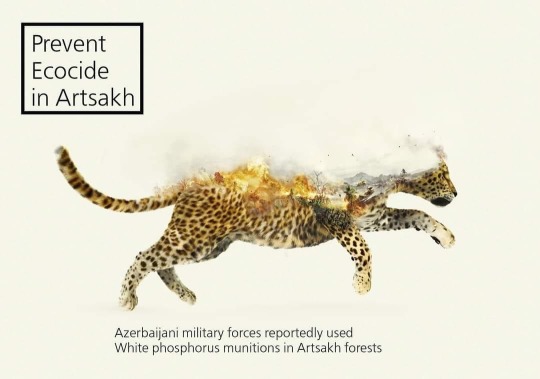
2 notes
·
View notes
Photo

Reposted from @kevin.m42 | @uwiydp For the second time, I have the honour of hosting a session on Climate Change. This one is just as significant as the first which was done in New York City. This virtual Global Youth Network Summit on Climate change and Health will take place on July 10th, 2020. I'll be hosting a power panel entitled ‘Covid-19 and the Environment, What’s Next?’ with youth from across the Caribbean and North America. This panel is exceptionally important as they discuss the increasing challenges to youth and how best can we ensure that the environment remains a top priority even in a Covid-19 prevalent society. Join us on Friday 10th July, 2020 at 9 AM EST - 1 PM to hear this panel and many more interesting speakers! More Information and registration is available at: http://bit.ly/2BrzvA6 Check out a bit more about me via the brief bio below. Kevin is currently a Project Officer with The University of the West Indies Youth Development Programme. Located in Barbados, his work with The UWI YDP covers 18 countries and territories across the Caribbean region. He is a national of Barbados but maintains a global focus to understand the challenges that could present itself to the Caribbean region and its youth. He maintains a focus on the field of Development, notably areas of climate change, sustainable finance, health, human rights and security. Through his work with The UWI Youth Development Programme, he has coordinated and partnered with local, regional and international organizations on programmes and initiatives as well as advocated for a stronger voice and representation for the youth of the Caribbean region. #climate #climateaction #covid19 #environment #advocacy #biodiversity #caribbean #uwi #motivationalspeaker #motivation #determination #future #youthvoice #youth #youthsummit #youthadvocates (at ScholarshipJamaica.com) https://www.instagram.com/p/CCazhbLhOpZ/?igshid=vf8bwpd7rshd
#climate#climateaction#covid19#environment#advocacy#biodiversity#caribbean#uwi#motivationalspeaker#motivation#determination#future#youthvoice#youth#youthsummit#youthadvocates
1 note
·
View note
Text
Human Nature Projects International
In conversation with Elliot Connor, CEO and Founder, Human Nature Projects International
How old are you?
I’m 16 years old- that funny age in which you’re no longer completely blocked out by duty of care bureaucracy, but still not quite an adult. Anyway, it helps to make me stand out a little from the crowd, and there’s plenty of youth-related opportunities out there if you know how to look for them.
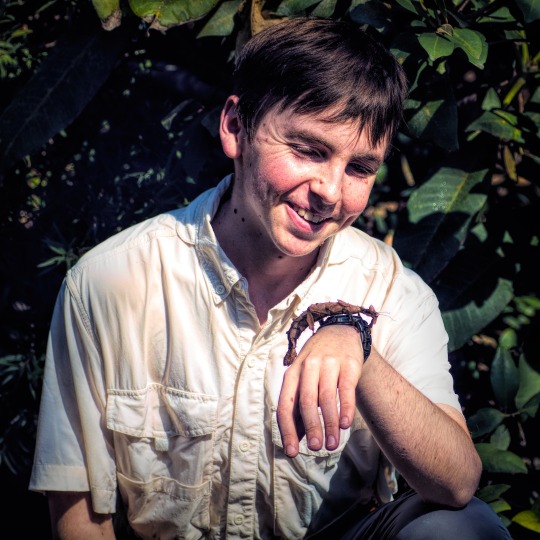
When did you first start getting involved with conservation and the environment?
With these things, it’s very hard to pinpoint an exact time and place. My family being British, we’d always done some very amateur birdwatching and taken the occasional trip overseas to watch wildlife. But it was probably just before my sixteenth birthday when things really kicked into place: I took up a volunteering position with Birdlife Australia at a discovery centre they ran in a local park, working with lots of very old retired folks to chat to families and other visitors. It was admittedly a little dull, but it allowed me to start amassing contacts in the environmental sector, and the opportunities sort of sprang from there.
What does Human Nature Projects do?
Human Nature Projects is connecting people for the planet because together we can make a world of difference. We are reimagining conservation, creating a community vision for mutual respect and prosperity amongst all our Earth’s many lifeforms. We come from all walks of life, from every continent, speaking many different languages- yet we are joined by Earth’s universal tongue: the appreciation of mother nature, and an undying passion to protect it.
At last count, we have about 500 members coming from 70 countries across the globe, bringing to this movement their skills and experience in all manner of fields, their passion and connections, their vision for a future world. Together we work to promote a model of simple, holistic environmental volunteering whilst raising awareness of the conservation issues at hand and equipping the young generation with the skills to solve them.
Many people say that it is ‘human nature’ to destroy our planet out of greed, exploit other lifeforms to the point of extinction, and forget of their plight in our own short-sightedness. We say otherwise. Human Nature should be a force for good- a story of connection, collaboration and community which ends in a prosperous future for creatures great and small.
It is this very same philosophy which Human Nature Projects brings to all of its activities, our powerful network of nature-lovers growing organically through experiential learning and community leadership. Our mission is to restore humanity’s appreciation of Earth’s amazing biodiversity, reminding people that we needn’t be (indeed are not) the superior species on this planet.

Aren’t there enough environmental groups already? What is it that makes you so special?
First off, we’re an open group- everyone (and I mean everyone) can get involved, and play a useful role in helping grow the collective. Because it shouldn’t be hard to help our planet, and people need to feel they can change things, that they are important. I guess you could call HN more of a movement, and we certainly hope our numbers will reflect this in future.
Second, we’re a huge believer in collaboration- working alongside many organizational partners and existing networks to show our support far more than would be expected for a charity of our size. It really can’t be overstated the need to communicate and collaborate effectively with other NFPs in the field to grow audience and funding for mutual benefit and ensure efforts are not duplicated.
Last but not least there’s our philosophy. Trying to change the way people view animals is a task that most organizations shy away from, but it’s also the most important thing anyone can do. It takes a lot of thankless work with little or no funding, but in the end, it surely will be worth it.
How can one get involved in HNP?
First off, we’d get you to complete our volunteer sign-up on Google Forms. It’s quick and easy to fill out and will allow us to link you up to the national director in your country who will get in touch for a quick chat. After that, we’ll use the information you’ve provided to link you up with one or more of the volunteer working groups we have running, headed by members of the HNP executive committee. And that, as they say, is that.
So what’s in store for the future? Any big plans?
There’s plenty to look forward to. October will see the launch of our Conservation Connection network- HNP’s attempt to walk the talk and promote some solid inter-organizational discussion. Then in the new year, we’ll be launching the Credit2Nature day, a global awareness campaign to make people think about all nature has done for us and how little we have given in return. Working with 1% for the Planet among others, we hope to make this event an opportunity to raise fundraising levels for conservation as a whole, and in doing so establish a precedent which will help tremendously for the future.
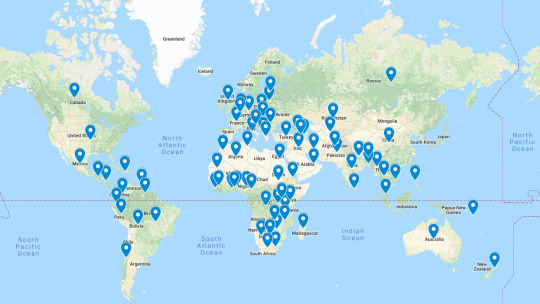
How did you first find out about the topic you are passionate about/your work focus?
Well, the long answer is that I spent two hard years trying to break my way into the environmental field: giving heart, body and soul to volunteering for more organizations and projects than I could count, sending hundreds of emails to offer my help, and generally making a fool of myself. Yet after all that, I had met zero young people, made zero useful connections… and, well maybe I had a few memorable experiences. No-one could understand my work, let alone why I did it. So I came to a decision that this wasn’t good enough, that we needed to do more to support the likes of myself- those keen young students and youths wishing to make their mark in the world. And that was how Human Nature Projects began.
What is one thing you’d like older generations to know?
I don’t think there’s anything that they don’t know already… it’s more about reminding them of certain things. Firstly, young people do care for our planet, and above all you must not give up on them. Secondly, that we need support: mentoring, community, resources, and most of all belief that our crazy ideas, our ambition has the power to change the world. And last of all, that we forgive them for what they have done to the Earth because they were unaware at the time. All that matters now is that they help to fix it.
Do you think youth should have more of a voice in environmental discussions?
Yes, absolutely. Environmental management is a very unusual field in that it cannot claim to have existed for more than the past fifty years but still lives in a sort of no-man’s land between the world then and the interconnected, rapidly evolving world of the present day. The wizened leaders of the movement continue to hold excessive power, handicapping the success of the whole by making it inaccessible, exclusive, bureaucratic, conservative and isolated from the general populace. We need a sort of people’s planet, everyone’s environment philosophy if the movement is going to grow, and it is the sort of ambitious thinking provided by youth which ultimately will bring this about.
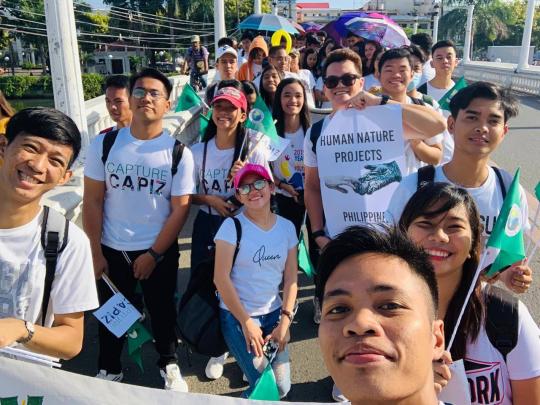
It must be tough starting something so epic and large-scale as a minor. How do you make people believe in what you say?
You tell me! Sure I’ve experienced my fair share of setbacks and straight-off no’s, but taking a step back to look at the bigger picture it’s mind-blowing how supportive people can be. It takes only a little courage, some unbounded optimism, and a liberal dose of enthusiasm to begin turning heads. Then, of course, once things pick up it’s you and your army with enough manpower and voices to start a nice little avalanche.
Okay- how about a favourite quote? Or two, if you prefer.
“I think sometimes we need to take a step back and just remember we have no greater right to be here than any other animal.”
David Attenborough
#youthforourplanet#climate change#climate crisis#hnp#asiapacific#savetheplanet#saveourplanet#wildlifeconservation
5 notes
·
View notes
Text
"From Thursday 25 to Sunday 28 July, Extinction Rebellion will be spreading the message of Internationalist Solidarity in addressing the Climate and Ecological Emergency at WOMAD, the UK’s biggest festival devoted to music, arts and dance from around the world.
As well as hosting speakers and performers from around the world on their Rebel Rebel Stage throughout the festival, Extinction Rebellion will be holding a Celebration of Life on the Charlie Gillett Stage on Saturday morning, culminating in a Rebel Roar in defence of the planet; ceremonially reading an advanced copy of the Global Witness list of murdered indigenous activists in 2018; and recreating the Garden Bridge from the April Rebellion in London, with saplings from the trees which survived the Battle of Verdun.
From 10am on Saturday, Skeena Rathor of Extinction Rebellion’s Visioning team will lead a Celebration of Life on WOMAD’s Main Stage. This will honour the courage and successes of Earth Protectors around the world, rejoice in a shared faith in humanity and nature, and call for the restoration, regeneration and rewilding of the one planet we all call home. Youth speakers from around the world will be joined by festival musicians and the Invisible Circus in telling the story of Extinction Rebellion. There will be a guided meditation, stories from children, a Gaelic hymn of mourning honouring Global South activists killed on the front line and music in support of Extinction Rebellion from Undercover Hippy. It will culminate with a call to action and children leading the audience in adding their voices to the Rebel Roar, a powerful expression of fierce defiance in defence of the planet, accompanied by a waving sea of Extinction Rebellion flags.
The Celebration will also include a solemn ceremony led by Kofi Mawuli Klu, who will read out a list of indigenous activists murdered around the world in 2018. This list is an excerpt from an advance copy of the annual Global Witness defenders report, due to be released publicly on 30 July. Indigenous activists protect over 70% of the Earth’s biodiversity. The ceremony will honour those murdered for defending their lands and this biodiversity from western mining interests and the fossil fuel industry.
Extinction Rebellion will also be recreating the atmosphere of the Garden Bridge at WOMAD with trees decorating the Rebel Rebel tent, as they did Waterloo Bridge during the International Rebellion in April. These will afterwards be given to good homes in underprivileged neighbourhoods, just as the trees from Waterloo Bridge were.[1] In this way, WOMAD will be transformed into Waterloo Bridge, just as Glastonbury was Oxford Circus, with the iconic pink boat. Following this, Wilderness will become Parliament Square and Boomtown Marble Arch, retelling the story of the Spring Rebellion across the Summer’s festivals, while recruiting for the Autumn Rebellion.
Among the trees being brought to WOMAD are two Verdun saplings, a horse chestnut and an oak, direct descendants of the last remaining trees from the single deadliest battle in human history. The Battle of Verdun in World War One left a million dead and injured in one single military engagement. The few Verdun Trees left alive after this battle of unimaginable horror became a symbol of peace, so the Verdun saplings at WOMAD will represent loss, sorrow, peace and regrowth.
On top of all this, Extinction Rebellion will be hosting a full programme of talks, performances and workshops at the Rebel Rebel stage and tent throughout the festival. Indigenous elders from around the world will highlight the importance of internationalist solidarity in the struggle for climate justice. There will be performances from musicians from around the world, talks on the Climate and Ecological Emergency and what to do about it, nonviolent direct action training, and various other workshops.
Skeena Rathor of Extinction Rebellion’s Visioning team says: “Solving the Climate and Ecological Crisis is the greatest and most complex challenge that we have ever faced, and we need to work together in order to do so. The ethos of WOMAD and Extinction Rebellion is a natural fit, so I think we’ve found our festival home. We communicate through stories, so we are so delighted to have a stage at WOMAD and a platform to tell our story. Life is a precious and beautiful miracle. We must take joy in our existence, so we will be holding this Celebration of Life and calling on all there to Rebel for Life, to Dance and Disobey and join the movement of our lives. We will not stop until we win.”
Coordinator of Extinction Rebellion’s Internationalist Solidarity Network Kofi Mawuli Klu says: “The fight for Climate and Ecological Justice around the world is ongoing. There are 27 million indentured slaves in the world right now. Young children are forced to mine for heavy metals. Resources are being plundered by rapacious Western corporations and courageous individuals are dying on the front line trying to stop them. Climate disasters strike with increasing and frightening frequency, with the Global South hit the hardest.
“But there are also many signs of hope, with indigenous people winning victories in legal battles, conservation efforts and tree planting around the world and increasing solidarity between activists in the Global North and South. What we choose to do now does make a difference and a different way of ordering the world is within our grasp. We have one planet so let us share it together equitably and wisely. Join Extinction Rebellion and Rebel for Life”
WOMAD’s Global Festival Director Chris Smith said: “WOMAD exists because of the ability of people of different cultures to collaborate positively and creatively, and so we’ve been inspired by the efforts of Extinction Rebellion to create such huge energy and global solidarity around the urgent need to tackle the ongoing climate and ecological emergency.
“It’s exciting that our two organisations will be able to come together this weekend to both celebrate the global cultures that form the core of our humanity, and inspire people to act to help preserve our species, our planet, and with them the global music art and culture we’re celebrating this weekend.” "
#extinction rebellion#climate crisis#climate action#climate activism#climate change#climate emergency#extinctionrebellion#extinction
9 notes
·
View notes
Text
Attention! WWF Needs Funds! Needs Your Donations!

REASONS FOR DONATIONS
1. ACCOUNTABILITY
WWF is trustable that program expenses are in a high percentage. According to the website of WWF, 84% of WWF's spending is directed to worldwide conservation activities, 11% of WWF’s spending is for fundraising, and only 5% of WWF’s spending is for administration (“World Wildlife Fund,” n.d.). Therefore, WWF is trustworthy for us to support.

2. SUCCESSFUL WORK
WWF has contributed significantly to the development and impact of the world conservation movement and to sustainable development. Throughout over 40 years, WWF launched many projects and campaigns to conserve wildlife successfully, such as Project Tiger, Tropical Rainforest Campaign, The Seas Must Live, Save the Rhino, etc (Parnes, n.d.). We can see that WWF is always the leading organization in the world to protect the nature and wildlife, and WWF always has an effective outcome and good news in conservation movement.

3. ENVIRONMENTAL EDUCATION
WWF puts much effort on education for sustainable development and youth empowerment. Environmental education has been a part of WWF's work since the organization's inception. According to the website of WWF.panda (n.d.):
The WWF network currently conducts one of the largest, most diverse and widespread programs of education led by an international organization. Education programs initiated by WWF, including school and outreach programs, community learning and developing curricula, aim to empower and motivate young people, partners and local communities, to solve the challenges facing the environment.
Environmental education is a good plan to protect to our nature and environment in the long run, so WWF always had a new and effective work in environmental protection.

4. NEEDS MUCH MORE SUPPORT FOR THE GLOBAL GOALS
Conservation programs needs much more money than before due to agreement of world government. For meeting the targets of world governments that committing to halting human-induced extinctions and safeguarding important sites for biodiversity by 2020, the financial costs are largely unknown. Protecting and effectively managing all terrestrial sites of global avian conservation significance, for example, 11,731 Important Bird Areas would cost U.S. $65.1 billion annually, and adding sites for other taxa increases this to U.S. $76.1 billion annually, so meeting these targets will require conservation funding to increase by at least an order of magnitude (McCarthy et al., 2012). Therefore, WWF needs our support.

World Wildlife Fund (WWF) is a trustable and effective charity that protects the nature and wildlife. Their work focus on the conservative programs directly, but also focus on the environmental education, so they aim to have a good plan to protect the environment in the long run. World Wildlife Fund (WWF) is worth our support.
WILL YOU SAVE OUR EARTH?
PLEASE DONATE VIA THE LINK BELOW.
WWF DONATIONS LINK: https://support.worldwildlife.org/site/SPageServer?pagename=main_monthly&s_src=AWE1907OQ18299A01179RX&_ga=2.18807419.357690934.1555987898-2013436060.1552701723
PANDA NATION + FUNDRAISING INQUIRIES: [email protected]
References
Parne, R.B. (n.d.). All About the World Wildlife Fund. Retrieved from https://animals.howstuffworks.com/endangered-species/world-wildlife-fund3.htm
World Wildlife Fund. (n.d.). Retrieved from https://www.worldwildlife.org/
World Wildlife Fund. (n.d.). Retrieved from http://wwf.panda.org/our_work/people/people_and_conservation/our_work/education_for_sustainable_development/
McCarthy, D.P., Donald, P.F., Scharlemann J.P.W, …… Butchart, S.H. (2012). Financial costs of meeting global biodiversity conservation targets: current spending and unmet needs. doi: 10.1126/science.1229803
1 note
·
View note